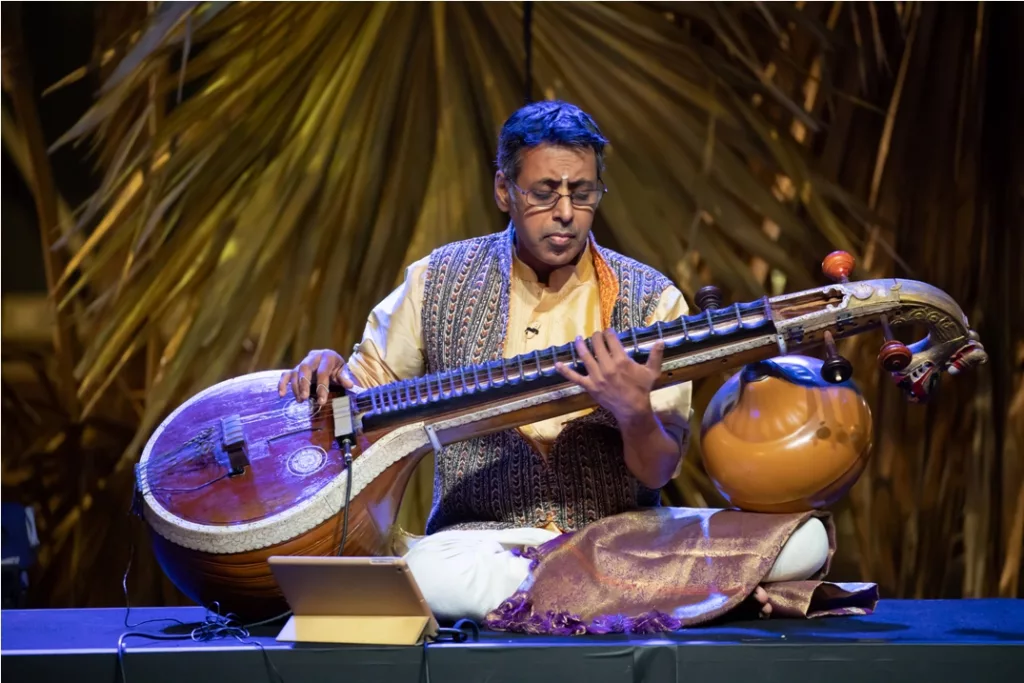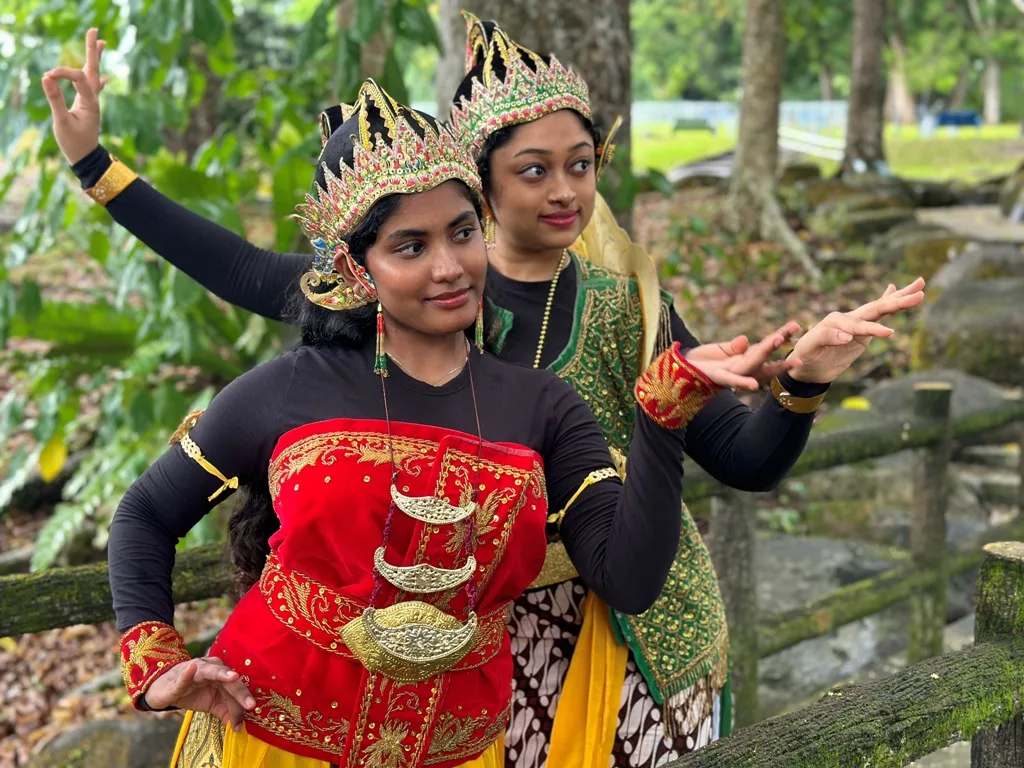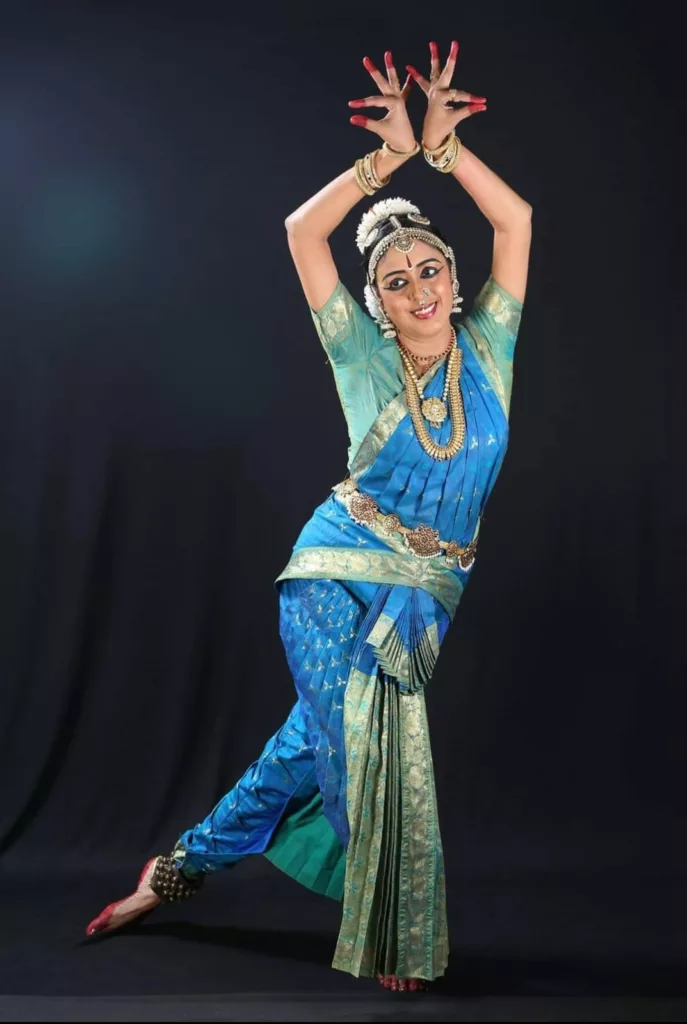The Alliance Francaise Theatre in Singapore will play host to Prambanan, a Javanese-Indian fusion dance ballet on August 25, 2024. The piece was created after a two-year research on the history, art and architecture that linked the two countries — India and Indonesia — and dates back to over 1500 years.

Artistic director Ramkumar Vasudevan, an accomplished veena player, who has staged performances like Daasaru, Sant Mela, Devadasi and the saint, Bliss and Prahlad, spoke to Connected to India‘s Sudipto Maity ahead of the event, sharing details about Prambanan.
“The Temple of Prambanan has an interesting folklore and we present it as a musical treat,” he said. “In Prambanan Temple, we can see reliefs of many Hindu gods, demi-gods, apsaras, musical instruments and scenes from the Ramayana, especially sculptures of karanas of the 2nd century AD’s Natya Shastra! Our first dance presents these karanas, probably the first time performed in Singapore. On the north side of this temple stands a statue of Durga – a Hindu goddess. However, locals say it is Roro Jonggrang, a slender maiden and the heroine of a famous folklore. So, what’s the story of Roro? We present it in a dance ballet.”

The ballet will feature dances from both India and Indonesia, to be presented by eight artistes each from the respective regions. The event is a collaboration between SYAMA — which was started in 2004 by Ramkumar to promote classical music and dance amongst Singaporean youths — Swarna Kala Mandir and Kesenian Tedja Timur Singapore.
Asked about his source of inspiration for the ballet, Ramkumar said, “A book titled ‘From Sojourners to settlers’ written by Arun Maghizhnan and Nalina Gopal shared information about a broken portion of the stone found when Sir Stamford Raffles widened the port of Singapore to anchor his ship in the year 1843. Currently placed at the Singapore museum and called the Singapore stone, the inscription has not yet been deciphered. However, Dr Sinclair, a researcher from Australia, says that it reveals a word – ‘Kesariva’ – potentially a portion of the name ‘Parakesarivarman’ written in Kavi script.
“In fact, my opinion is that it could be a part of the name Rajakesarivarman too. I think so because every alternate Chola generation — such as Vijayalaya Chola, Aditya Chola, Parantaka Chola, Rajaditya Chola, Arinjaya Chola — named themselves as Parakesarivarman and Rajakesarivarman. This brings probably a new identity for Singapore much before the days of Sang Nila Utama which was about 700 years back. The Cholas extended their kingdom into Sri Lanka and had trade routes to China through the Sumatra and Java peninsula.
“Due to the Chola influence, along with trade and commerce, art and architecture flourished. Many Hindu temples built in the same period in the Sriwijaya and Mataram kingdoms had the influence of Chola and Pallava temple architectures. Of these, the Prambanan temple stands today as a proof of influence of the Cholas over the Sanjaya dynasty in central Java regions about eleven hundred years back,” he added.

Talking about the dance forms and costumes for the upcoming show, he said, “We have selected Indonesian costumes for Indian dances. We stick to more abinaya based form of Indian dance, as this is a drama.”
“Further, the intention is to present it for a common man. We have added Javanese traditional dances such as Tari Pendet, Tari Srimpi, Kecek and Kuda kepang. Especially, the Kuda kepang is a dying art that needs to be rejuvenated.”
Prambanan comprises seven original songs written by SriGanesh and composed by Ramkumar. Dr Sujatha Mohan from Chennai, India, will be performing karanas as reconstructed by eminent dancer and researcher Dr Padma Subramaniam.
Singapore-based dancer Swarna Varsha Gurumoorthy and Dr Mohan have choreographed the Indian dances. Iswandiarjo Wismodiarjo, the fifth-generation leader of Kesenian Tedja Timur, has co-ordinated all five Javanese songs. Experienced designer Kalai will handle the lighting.
Tickets for the show can be purchased at https://app.promotix.com/events/details/Prambanan


